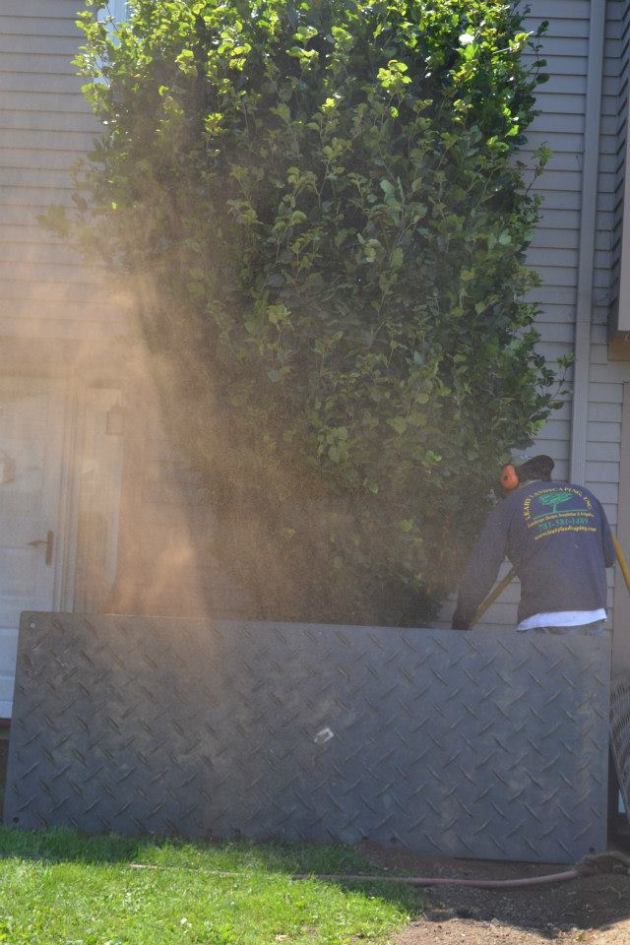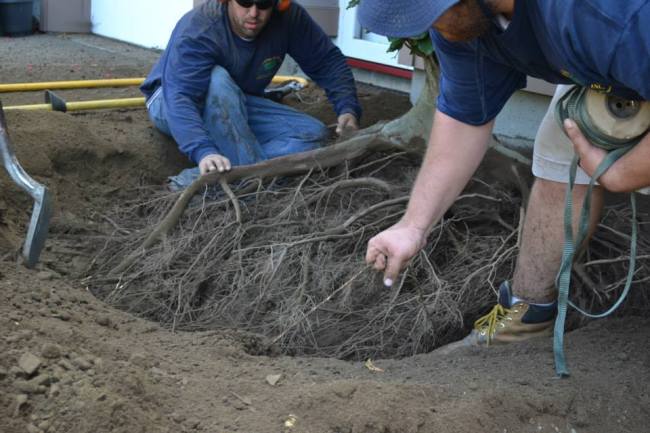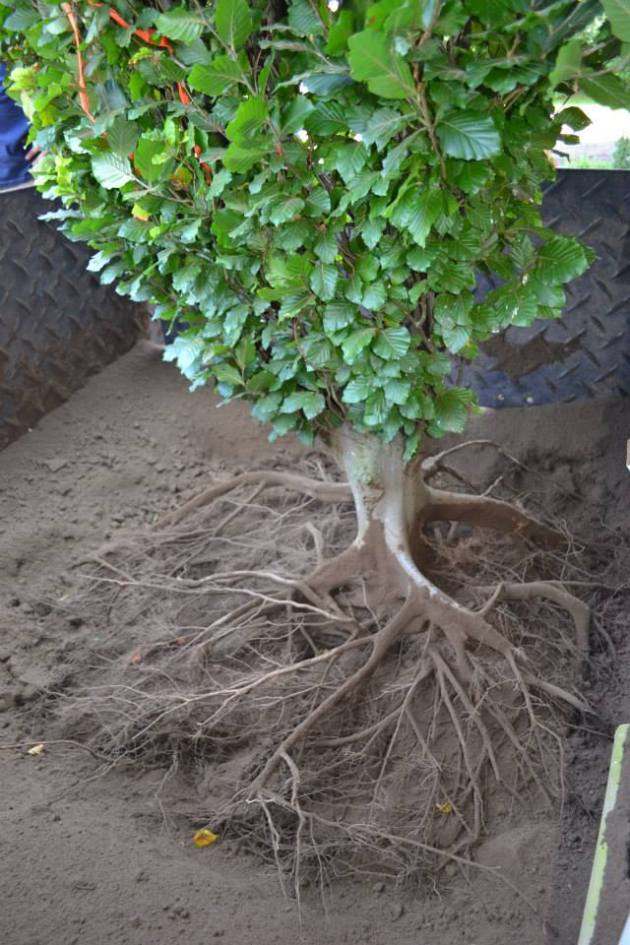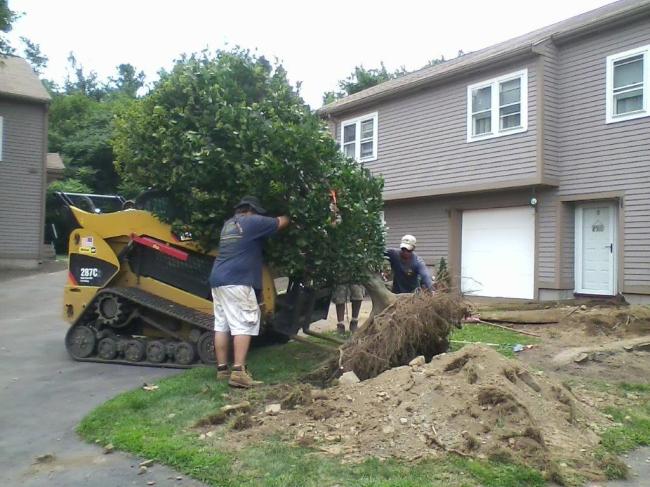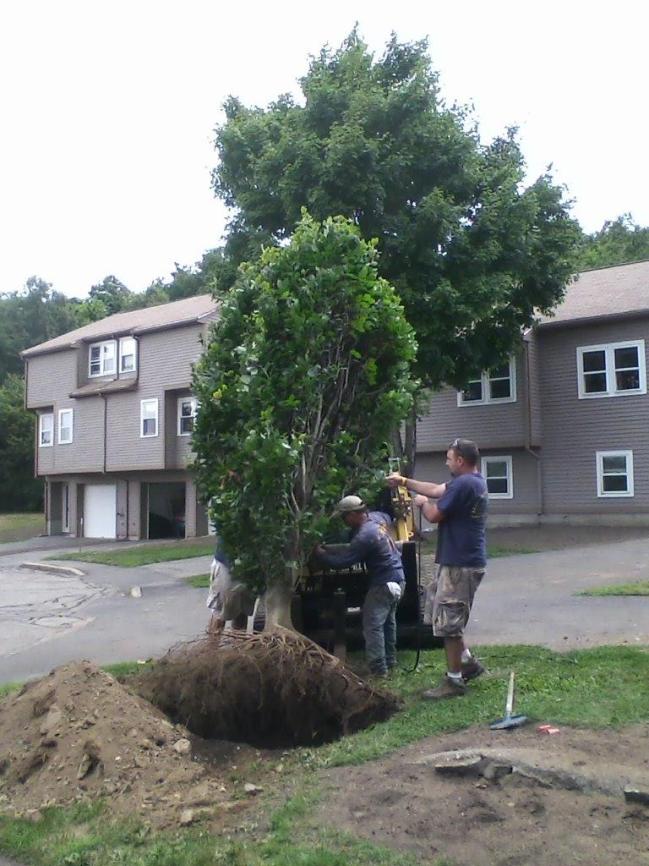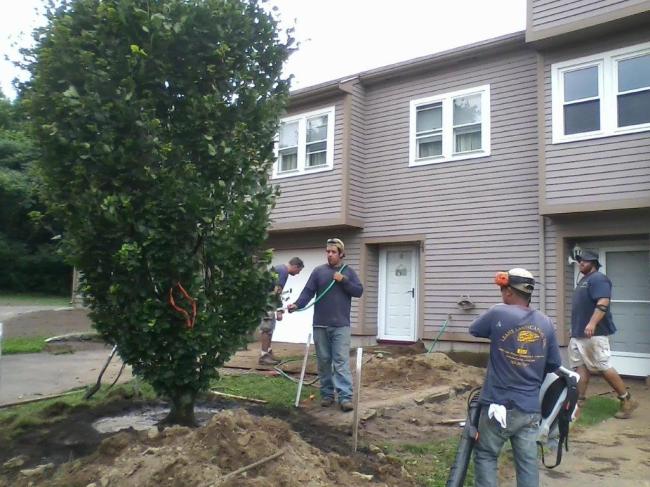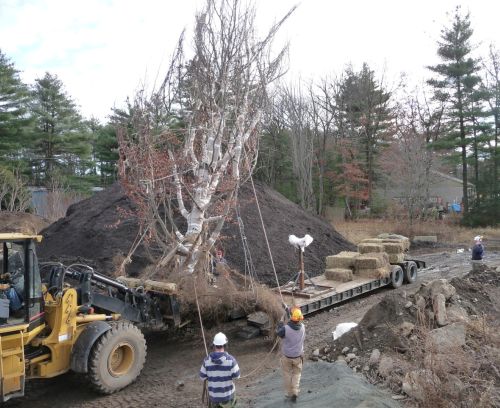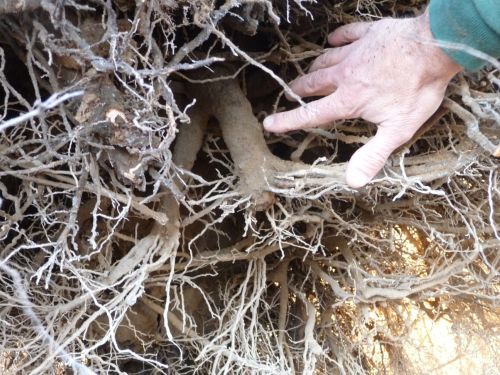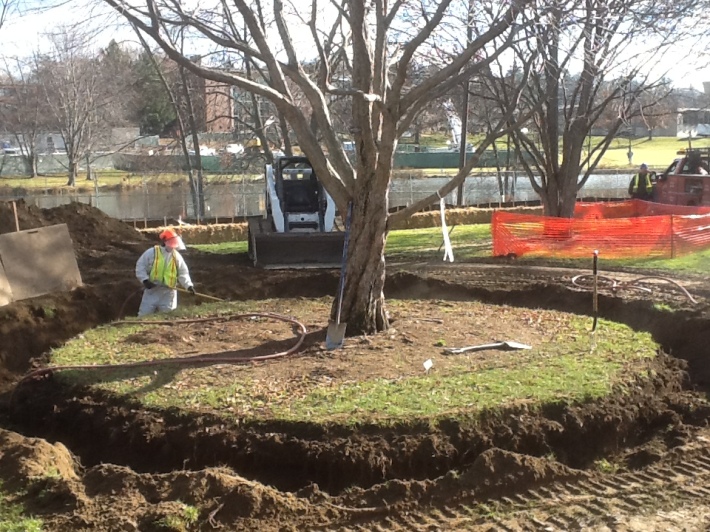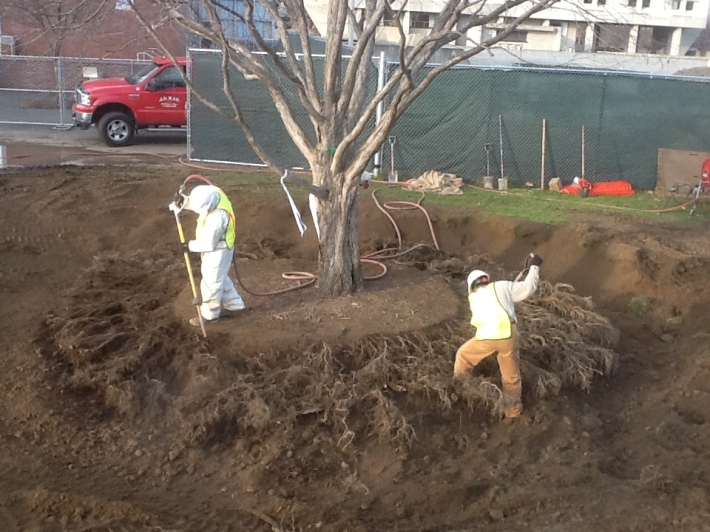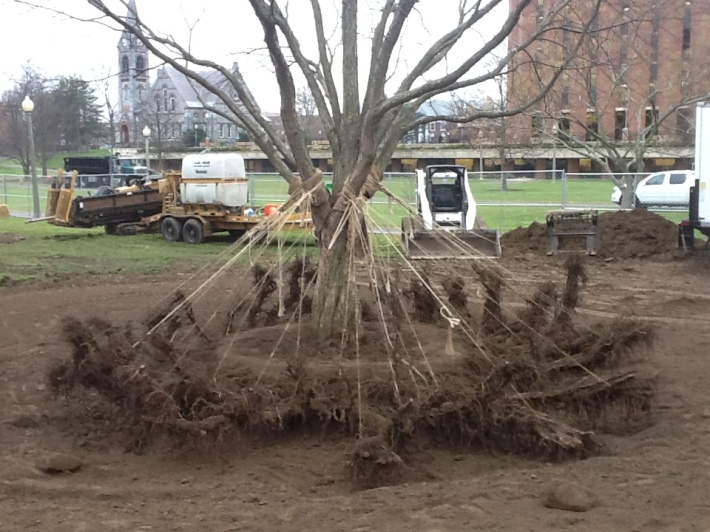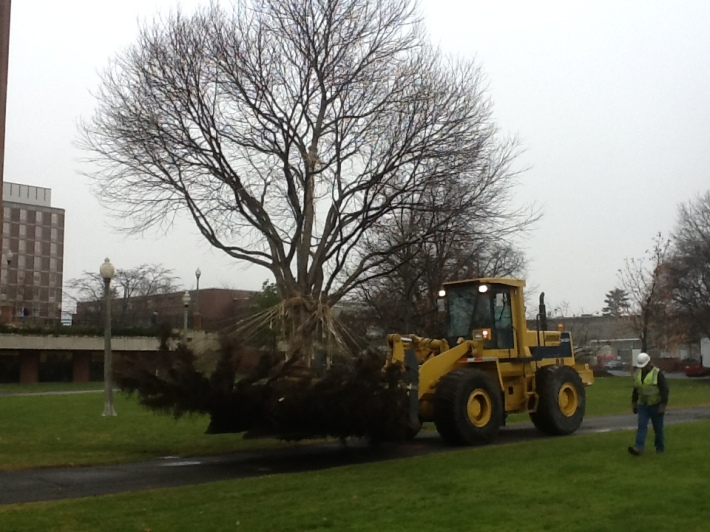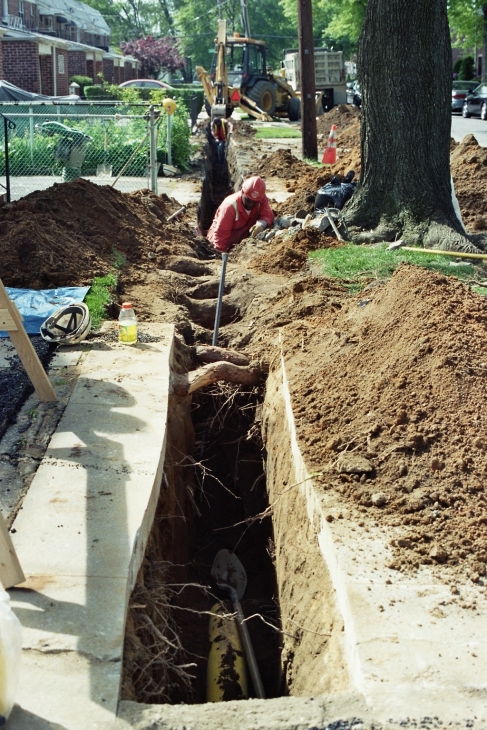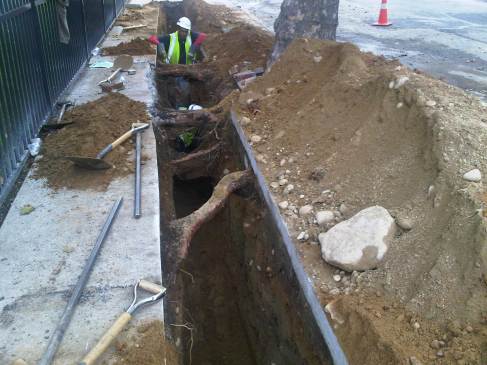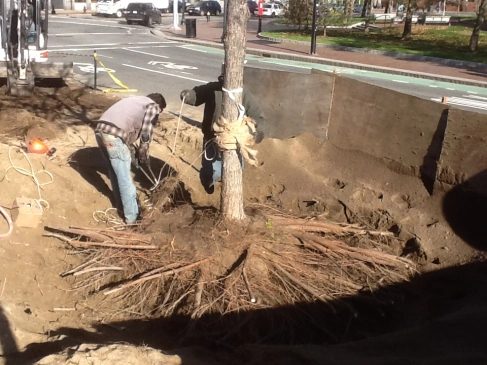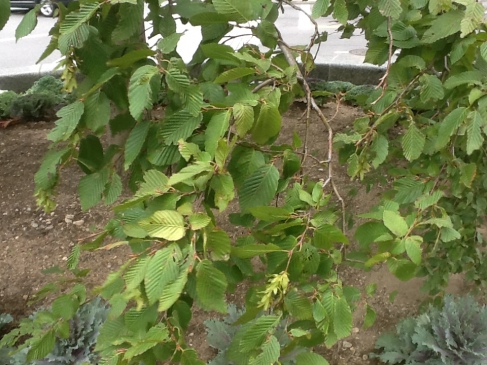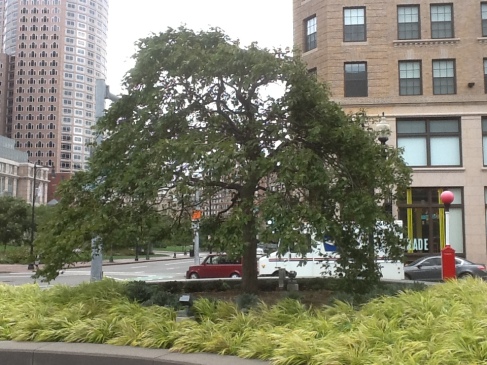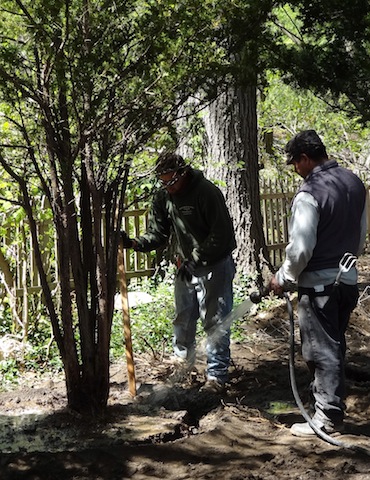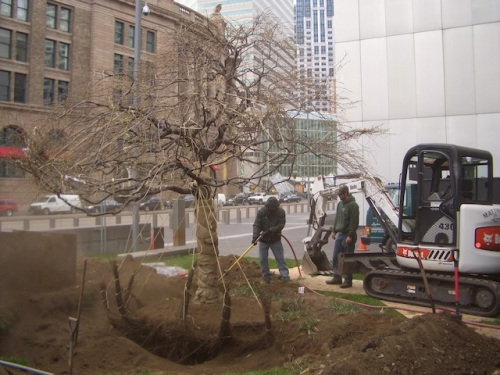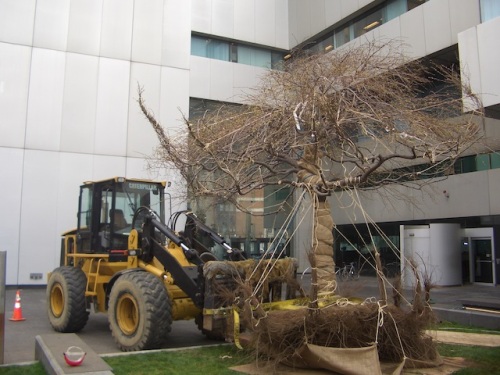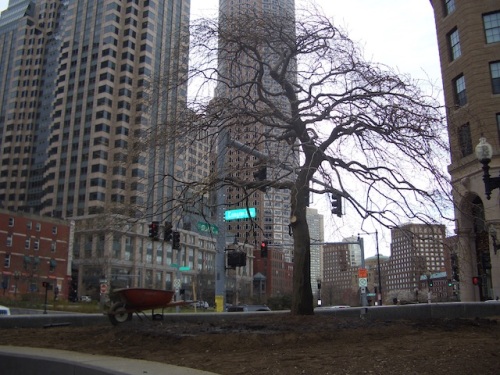Air-tool transplanting is continuing here in Massachusetts; while it hasn’t yet become commonplace, arborists in this part of the world are conversant with the techniques, and some firms have been routinely been moving trees bare-root for the last few years. Leahy Landscaping of Lynn, MA, has a team of transplanters, led by Mass. Certified Arborist Bob Dobias. Bob recently sent me some photos of a project his crew carried out this past summer; they moved a beautiful 14′ Fastigiate Beech in Salem with air. They relocated the tree from a location right next to a building to a spot further out on the property, where it can now grow to its full potential. Here are the pix Bob sent:
This tree has been growing nicely next to a condo entry, but was likely planted there when it was a much smaller specimen.
Bob has exposed the topmost roots, and is working his way underneath the root mass. Note that he’s wearing ear protection and has dust barriers set up around the work area.
Fastigiate Beech is a narrow tree, and while a blowout to the dripline frees most of the roots, some root mass still had to be cut. Bob reports that his crew cut one root that was growing under the driveway.
Nice root mass on this tree. The time had arrived for this tree to be transplanted; notice that the roots to the right are shorter and have been redirected down by the presence of the building wall. A tree that grows for too long this close to a wall might not be as readily moved as this one — not because it can’t be dug out, but because the root mass has grown too asymmetrically for the tree to stand well away from the wall.
The Beech being introduced to its new home. According to Bob, the crew could have lifted the tree by hand, but decided to use the machine to minimize hazards to it. For the actual move, they tied the tree to the forks; this shot, it has been untied and is being guided into the planting hole.
And from a different angle. The hole receiving it could be a bit wider, to make the backfilling and mudding in easier, especially as there are no obstructions around it.
With the tree placed in its new home and backfilled, the crew waters and muds it in. Leahy added better loam for backfill, and secured the tree with duckbills, to insure stability while it grows into the new location.
Proud Leahy crew and Fastigiate Beech. The Beech should now be able to grow a little fuller both above and below ground on the side that had faced the building. The transplant operation took about six hours from start to finish.
Bob reports that the tree has experienced some stress from the move, but he expects it will equilibrate crown and root growth and leaf out well next year. We’ll keep an eye out for more pix next year, to check its progress.
Fastigiate Beech moved by:
Leahy Landscaping, Lynn, MA
Arborist in charge: Bob Dobias, MCA
Crew: Alfredo Esteban, Shane Corcoran, Greg Beatrice
